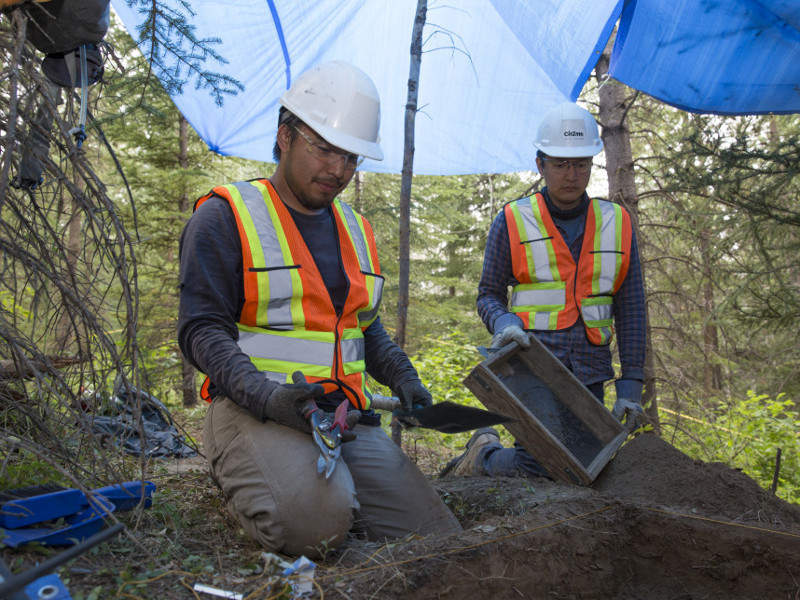Coastal GasLink pipeline project is a 670km-long gas pipeline being developed in British Columbia, Canada. The project is being developed by LNG Canada, which is a joint venture between four major energy companies including Shell (40%), PETRONAS (25%), PetroChina (15%), Mitsubishi Corporation (15%), KOGAS (5%).
The project is estimated to cost C$6.6bn ($5bn), based on the combined value of contracts awarded till date.
LNG Canada launched the project in 2012 and selected TransCanada (now TC Energy) to own, operate and build the pipeline. TC Energy is executing the project through its subsidiary, Coastal GasLink Pipeline Limited.
TC Energy entered into an agreement to sell 65% equity interest in the Coastal GasLink Pipeline to private equity firms KKR and Alberta Investment Management Corporation (AIMCo) in December 2019.
Project Gallery
The environmental assessment application to the British Columbia Environmental Assessment Office and the British Columbia Oil and Gas Commission was submitted in 2014. A conditional environmental assessment certificate was awarded to the project during the same year. All regulatory approvals for the project were awarded in 2016.
Final investment decision on the project was taken in October 2018. The pipeline is expected to commence operations by 2023.
The initial capacity of the pipeline is expected to be approximately 2.1 billion cubic feet of natural gas a day with provision for expansion, which will increase the capacity to five billion cubic feet of natural gas a day.
Coastal GasLink pipeline route and construction details
The Coastal GasLink pipeline is being built as a connector to the proposed LNG processing facility and export terminal in Kitimat, British Columbia. It will run from Dawson Creek area to a reservoir in Douglas Channel near Kitimat, where the gas will be converted into the liquefied state for being exported to the global markets.
The construction is planned to be carried out in stages, with each stage covering a different section or spread of the pipeline.
It will begin with clearing the topsoil followed by leveling off the ground to ensure that the construction equipment can be placed uniformly. A trench will then be dug for laying the pipeline using a backhoe or similar equipment.
The pipeline sections will lie along the edge of the trench to ensure that the laying is in the planned route. The welders will adjoin the pipe segments, inspect each weld using X-rays and place the welded pipe into the trench. The welded pipeline will then be coated with anti-corrosion paint and the soil will be restored.
The pipeline will be tested by flooding with water and checking for leaks before being commissioned.
Contractors involved
Spiecapag Canada, a subsidiary of VINCI, and Macro Pipelines, a division of Macro Enterprises, have been jointly awarded the construction contract worth $900m for the pipeline. The scope of work includes the construction of two sections of the 48-inch diameter pipeline spanning 166km in Vancouver, British Columbia.
Surerus Murphy Joint Venture, one of Canada’s biggest pipeline venture contractors, was awarded the contract for building segments one and two of the pipeline in 2018.
SA Energy Group, a 50:50 joint venture of Aecon and Robert B. Somerville, was awarded a $526m subcontract by TransCanada, for constructing two sections of the pipeline with lengths of 123km and 74km.
Pacific Atlantic Pipeline Construction (PAPC) was contracted for sections six and seven of the pipeline that stretches for approximately 166km.
Civeo Corporation, a workforce accommodations provider, was contracted to provide accommodations in four locations along the pipeline route.
Benefits of the Coastal GasLink pipeline project
The Coastal GasLink pipeline project is expected to generate more than 2,000 skilled and well-paid jobs during its four-year construction period and between 16 and 35 permanent jobs during the operational period.
The developers are prioritising the involvement of local contractors and workers for the project. Contracts worth approximately $620m are expected to be awarded to northern British Columbia businesses.
Further, $400m-worth employment opportunities for the indigenous communities are expected to be generated during the construction.
The project will also generate annual property tax revenues of more than $20m, which can be utilised to build local hospitals, roads, and institutions.


